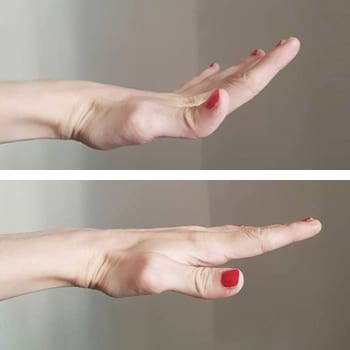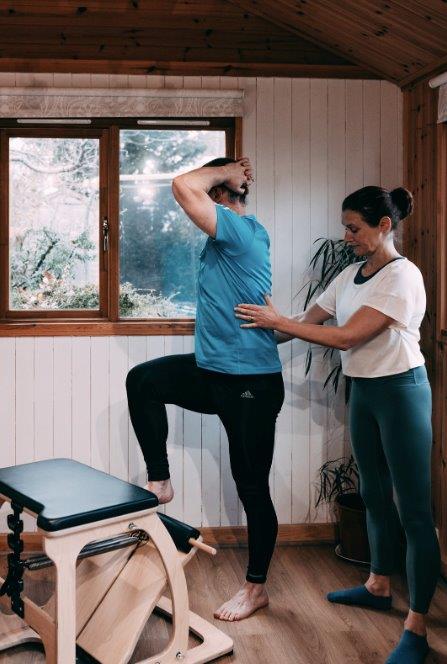Hypermobility Disorders

What is Hypermobility?
Everyone is born with a certain amount of tissue laxity and also differing neuromuscular characteristics. Genetics largely determines your natural flexibility, along with the type and amount of physical training that you’ve done throughout your life, particularly as a child and teenager.
First, it’ll help us to define terms a bit more.
When people talk about being “too flexible” there are a couple of different ways to think about this. Joint laxity refers to having more “give” in your ligaments and joint capsule, the part of the anatomy that attaches bone to bone. It is possible to have just one hypermobile joint due to a previous injury for example, but what we are talking about here is where there is a systemic difference affecting the whole body.
In general, women have more laxity than men (which can lead to more specific injuries such as ACL tears), and there is variation in prevalence between different ethnicities. Though of course, there will be many exceptions depending on specific cases.
You’ll see this manifest itself in contortionists who can do incredible things like folding in half backward or appearing to dislocate their shoulders.
Inside the ligaments are mechanoreceptors, specialized nerve endings that help sense where the body is located in space (called proprioception). When the ligaments are more lax than normal, it affects where the brain thinks the joints and limbs are located and this enables a person to move into ranges of motion that appear more extreme.
If you have extra flexible ligaments, you may relate to being “double jointed” in the past.
Then, there is how the muscles themselves react to being lengthened. Just as we all know people that seem naturally stiff as a board, there are those of us that progress much faster in stretching type exercise.
It’s pretty complicated, but in general, it’s related to how sensitive our “stretch reflexes” are. Some people have more sensitivity to stretch as their neuromuscular systems react by tightening up to resist the stretch.
Both joint laxity and an inherently decreased stretch reflex response contribute to how flexible we are in relation to everyone else.
For people with hypermobility, things don’t always feel stable, meaning that people can feel like their joints may come out their sockets in particular positions due to lack of stability/security.
For instance, you may not have a sense of security when hanging from a bar, as it feels like your arms might slip out of place or that you don’t have the strength to keep your arm in its socket.
But also your neuromuscular system can interpret the lack of stability as a threat and respond by sensitising the muscles so they get tight and stiff. When muscles are sensitised in this way they also often get sore and have reduced ‘motor output’- making them effectively weaker.
This is really common and it is often the case that hypermobile people have some areas that are very mobile and others that are super tight. This may account for why there is such a large correlation between people with hypermobility and chronic pain conditions like fibromyalgia.

How Do You Know if You Have Hypermobility?
Of course, just being a little more naturally flexible than the average person doesn’t necessarily mean you’re hypermobile. And there is a spectrum of hypermobility.
In clinical practice, one tool used is the Beighton test, which tests degrees of movement in several joints. We won’t go through the whole test here, of course, but to give you an example, try these few tests:
- Can you pull your little finger back more than 90-degrees on the right side? How about the left side?
- Can you pull your thumb to touch your forearm on the right side? Now try the left side.
- Can you bend down and touch the floor with straight legs
- Does either elbow bend a little the wrong way?
- Does either knee bend backwards if you lock them out?
We test 9 joints in total, and a score of over 4 is considered hypermobility.
You don’t necessarily need to go through a test like this, to know if you’re hypermobile. This is one often used test but it has been criticised for bias on the upper limb, and That feeling of instability in certain positions may be subjective, but it’s still important.
When Hypermobility is a More Serious Concern
Sometimes, hypermobility can present more serious issues, primarily when it is the result of issues with collagen. All the fascia, ligaments and joint capsules in the body are primarily made up of proportions of collagen and another protein called elastin. In hypermobility conditions there is a greater proportion of elastin and less of collagen- to varying degrees.
Two forms of hypermobility associated with collagen disorders are benign joint hypermobility syndrome (BJHS) and Ehlers-Danlos syndrome (EDS).
Individuals with BJHS are bendy but symptomatic, which means their hypermobility comes with things like joint pain, and they are prone to shoulder and knee dislocations, or bruising easily. There are several different types of EDS some of which include complications with the ligaments in the internal organs which are more serious and also more rare.
Estimates vary, but in the west some research indicates 15-20% of people have some degree of hypermobility, and around 5% are symptomatic in some way. Clinically we often see people who have recurrent injuries or chronic pain that affects their daily activities who did not know that hypermobility was a factor.
We are going into the musculoskeletal side of it here mostly, but recognise that complicating conditions like Postural Orthostatic Tachycardia Syndrome (POTS), mast cell activation and dysautonomia are common and take this into account in a treatment plan. If you are hypermobile you may not be aware hpow some symptoms are actually related to the condition.
The Way We Work With Hypermobility
Just as in any other case we work with the person and their specific situation. There is no one treatment for hypermobility, but rather it depends. At Acubody Therapies and Acubody moves we are used to helping people with complex histories and persistent pain, and hypermobility is something we have come to recognise as a significant factor in a lot of these. Duncan himself is hypermobile (BHJS) and so has a special interest in managing the conditions associated with it.
The soft tissue release techniques and acupuncture Duncan uses in the clinic can be used to ameliorate pain and release tension. But also they can help the neuromuscular system reorganise to facilitate optimal movement patterns, creating space for the body. Then its important to move into that space to normalise it, so your nervous system can absorb and process the change in the longer term- thats where movement is important.
Pilates is a really good method to use to develop more stability, control and body awareness, but not necessarily in the context of a gym mat class or boot camp reformer class. This is why we work individually with people so sessions and exercises given are right for you.
In clinical treatment the Go-To system is the starting point we use to help people move into the space created and build more stability and control. In fact the exercises themselves can also reduce pain. Then as you progress things can be taken along a progression depending on your goals.
- Want to run regularly again? Progressions will be based around that
- Want to handstand without your wrists hurting? Yes a plan can be focused on that too
- Want to get back to golf, or a class with your friends without your back hurting? Absolutely, rehabilitation and training can be focused on that too
And the Qigong we use is also excellent for building body awareness and control in movement, moving softly to release tension as well as strengthening the fascia over time

Training Around Hypermobility
Having a lot of flexibility doesn’t mean you have a lot of strength or control at those ranges of motion. And that’s often the biggest problem for people with hypermobility, and is responsible for those feelings of instability in certain positions. If you want to be able to use your mobility to its fullest potential, you need to be strong throughout the flexibility you have.
Let’s say you can squat all the way down to the ground without any effort. What happens when you lift up out of your squat by just an inch or two?
Having a lot of flexibility doesn’t mean you have a lot of strength or control at those ranges of motion. And that’s often the biggest problem for people with hypermobility, and is responsible for those feelings of instability in certain positions. If you want to be able to use your mobility to its fullest potential, you need to be strong throughout the flexibility you have.
Let’s say you can squat all the way down to the ground without any effort. What happens when you lift up out of your squat by just an inch or two?
What About Stretching?
You may be wondering whether stretching is okay if you already have a lot of natural mobility, and the answer is yes, you can stretch, but stretching should not be your priority. Your priority should be improving your strength and control, especially in the areas that are particularly loose.
When you stretch as a hypermobile human it is really important to do so in such a way that the muscle tissue can respond, without simply loading the ligaments and joints. And that’s an important distinction because it’s very common for people to be hypermobile in certain areas, but very stiff in others.
Hypermobility isn’t a condition to fear, as long as you don’t have any medical concerns related to your mobility, you can exercise just like anyone else by focusing on positioning, strength, and control. However you may need to adopt a certain focus and balance your training to avoid locking out joints, paying more attention to strengthening the tissues in your lax areas, and learning to release tension that is held.






